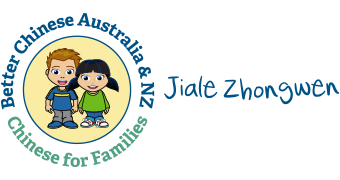Teaching Chinese in the sunshine – finding the keys to unlocking students’ potential
This blog post is about the learning journey of teachers. In particular it is about my learning journey at Chinese for Families , now in its twelfth year of operation. Many thanks to all who have supported me in this journey.
There is a famous Chinese idiom about a frog who lives in a well. This frog thinks the sky is only the size of the mouth of the well because that is all he has ever seen. When a passing bird tries to tell him about the vast world outside, he angrily rejects her words as rubbish. To me, this metaphor is very relevant to the field of Chinese as an additional language education.
As a practicing teacher, I see that a significant number of key players have already given up before the students even walk into the classroom. Chinese is ‘too hard’, students are ‘unmotivated’, it is ‘not possible’ or even more sadly, it is ‘not important’ or children ‘shouldn’t have to learn it’. Without belief, purpose or a sense of the importance of our work we cannot teach effectively, while without effective teaching most children will not learn.

An adapted version of this idiom “Viewing the sky from the bottom of a well” appears in AI Story Time
In fact, we do not yet fully know what is possible. The question of how best to present this very different language with a highly memory based written system to children growing up in the Western educational environment is still not fully explored or understood, although there is a small but growing body of research on the topic. To learn more, we need to be willing to try different approaches and leave the safety of the well of past practice. To have the courage to explore, we need to believe in the children’s learning potential and in the importance of our work.
I started a one lesson a week program, Chinese for Families Adelaide, in 2008 with a belief that it was possible for children to learn more than was common in once a week primary language programs and a desire to find out how to do it. I wanted them to develop a sense of the language and give them a foundation that would set them up for success in secondary school.
Over a period of years, I consistently came to the surprising realization that the children were surpassing my goals. The aspirations which I had seen as ambitious turned out to be underestimating their potential. For example, the first classes were run fifty percent in Chinese but after several years I learnt ways to run beginners classes almost entirely in Chinese. As we became better at using spoken Chinese comprehensibly, the students acquired more language. Similarly, at first I did not understand that it was possible for the children in the intermediate classes to learn to read texts in characters, but after four or five years I noticed with amazement that some children were in fact starting to do this.
Methodology makes a profound difference. At Chinese for Families Adelaide we use a range of learning activities and try to cover different aspects including vocabulary development, speaking, writing and cultural understanding. However, I believe that the two ingredients which primarily contribute to the development of student language proficiency are comprehensible listening and reading, used extensively and repetitively.
The American Council for the Teaching of Foreign Languages Position Statement on the Use of the Target Language in the Classroom states that ‘Research indicates that effective language instruction must provide significant levels of meaningful communication and interactive feedback in the target language in order for learners to develop language and cultural proficiency’(1). Particularly at junior levels, this will mostly be generated by the teacher who tailors the spoken language to suit the level of the students and provides visual clues, gestures, context and many other strategies to support student comprehension. As I and our other teachers became more confident at teaching with comprehensible input, we saw that it really is possible for young native English speaking children in a once a week program to develop quite reasonable levels of listening comprehension and start to interact spontaneously in Chinese in the classroom context.
Characters are central to Chinese culture and language and take time to acquire, which is why I believe setting up connections with the written language as early as possible is important. I started with using a number of conventional approaches such as talking about picture based characters, looking at structural components and writing. These were helpful for starting to understand the written system but in a one lesson a week program did not lead to much progress in reading comprehension. An unexpected breakthrough came when I started to include open ended reading following on from aural input. Essentially, students would first listen to stories or interactions using specific language and then be exposed to texts in characters using the same language. Full support was provided as I wrote the characters on the board with pinyin and English translation as they asked me. As I expected, all the children leant to recognize a number of characters in context through this method. What amazed me was that many of them progressed to full comprehension of the whole text, an outcome way beyond my initial goals. Similar results occurred in every class, including in classes in mainstream schools. Other teachers using the same methodology witnessed similar results.
Teaching the same children over a period of four to eight years gave me many opportunities to assess their progress long term and see how the program could be improved. For example, there were some words and characters that all the children had fully acquired after five years. They immediately understood these and could use them spontaneously without thinking. On the other hand, other words and phrases were completely forgotten. I came to understand that this was simply because some words were used again and again year after year while others weren’t. After that, I started to pay a lot more attention to the systematic recycling of spoken and reading vocabulary across year levels. This process of reflection based on the children’s learning outcomes over the long term led to many adjustments and improvements in the program.
In hindsight, it is not surprising that belief and purpose, methodology and long term programming have a profound impact on student learning outcomes. These factors would be taken for granted in most mainstream education programs. Like the bird outside the well, it is obvious that the sky is vast and there are paths to be travelled. However many Chinese teachers are not surrounded by a range of effective programs where we can see children learning naturally and confidently and where we can learn how to teach in ways to achieve similar results.
For those teachers who want to take up the challenge, the starting point is belief and purpose. We need to have meaningful language proficiency goals for our students and dedicate ourselves to learning how to achieve them. We may make mistakes, but if we are focusing on student acquisition, we will eventually realise that changes need to be made and adjust our methodology and program. Furthermore, the more we can work together as a team, the more impact we can have. According to John Hattie’s extensive and widely regarded research, collective teacher efficacy (the collective belief of teachers in their ability to positively affect students) is strongly positively correlated with student achievement(2). We can all keep learning how to help our students acquire the Chinese language more effectively and the journey starts with believing that more is possible.
1. GLISAN, EILEEN W. and DONATO, RICHARD “Enacting the Work of Language Instruction: High Leverage Teaching Practices” 2017 The American Council on the Teaching of Foreign Languages p21
2. HATTIE, JOHN Visible Learning Collective Teacher Efficacy (CTE) according to John Hattie (online) 2020
Accessed 7 January 2020 https://visible-learning.org/2018/03/collective-teacher-efficacy-hatti
